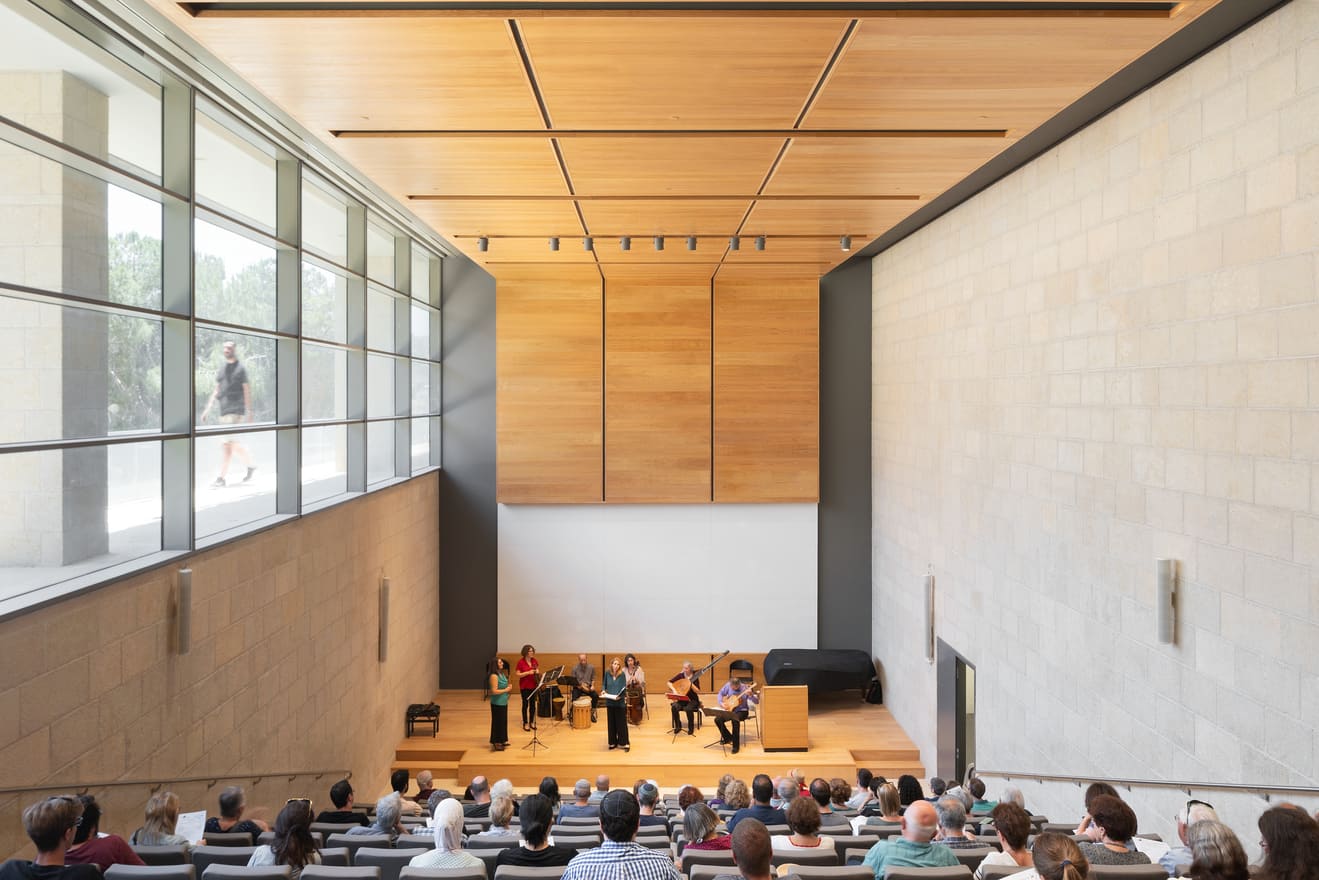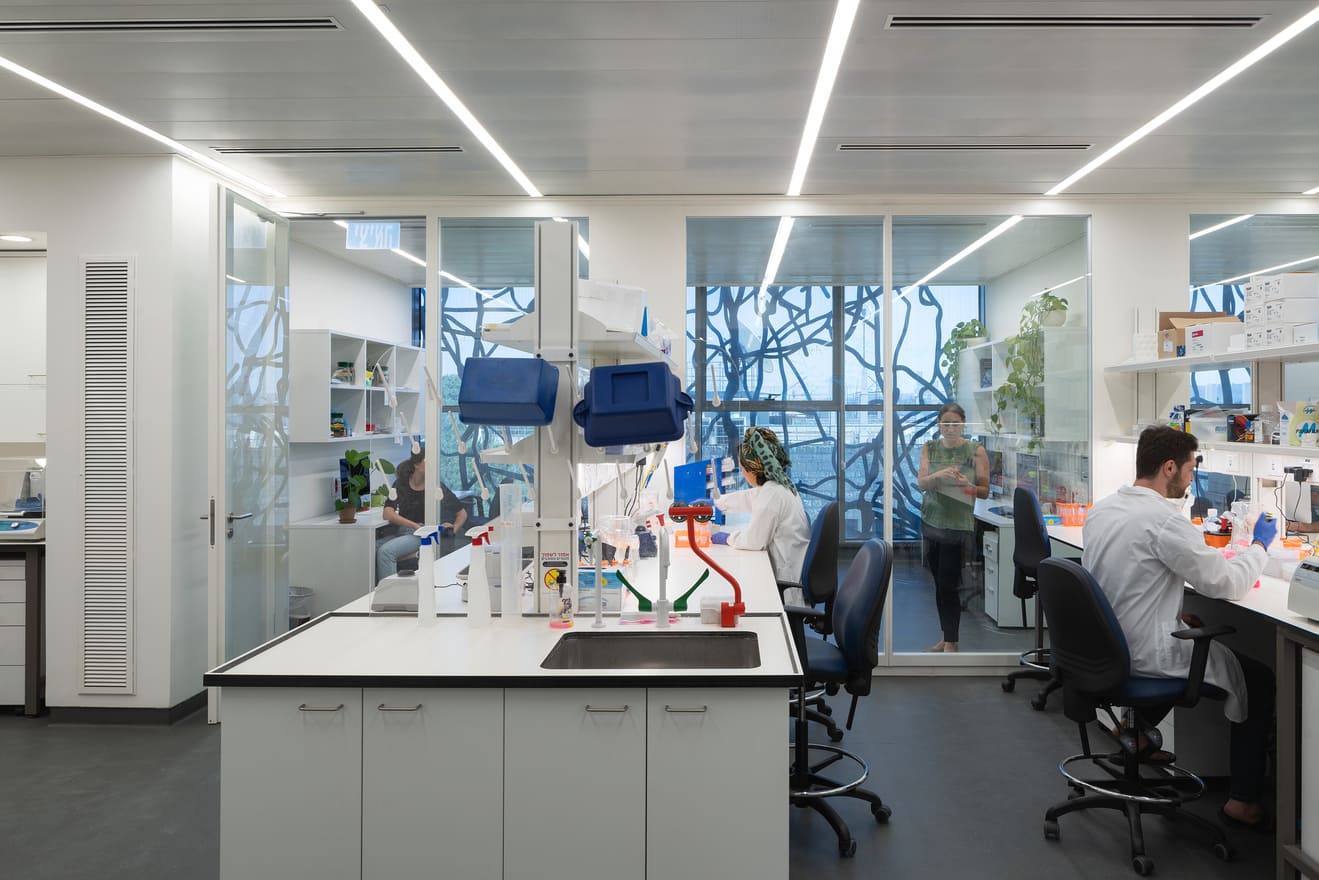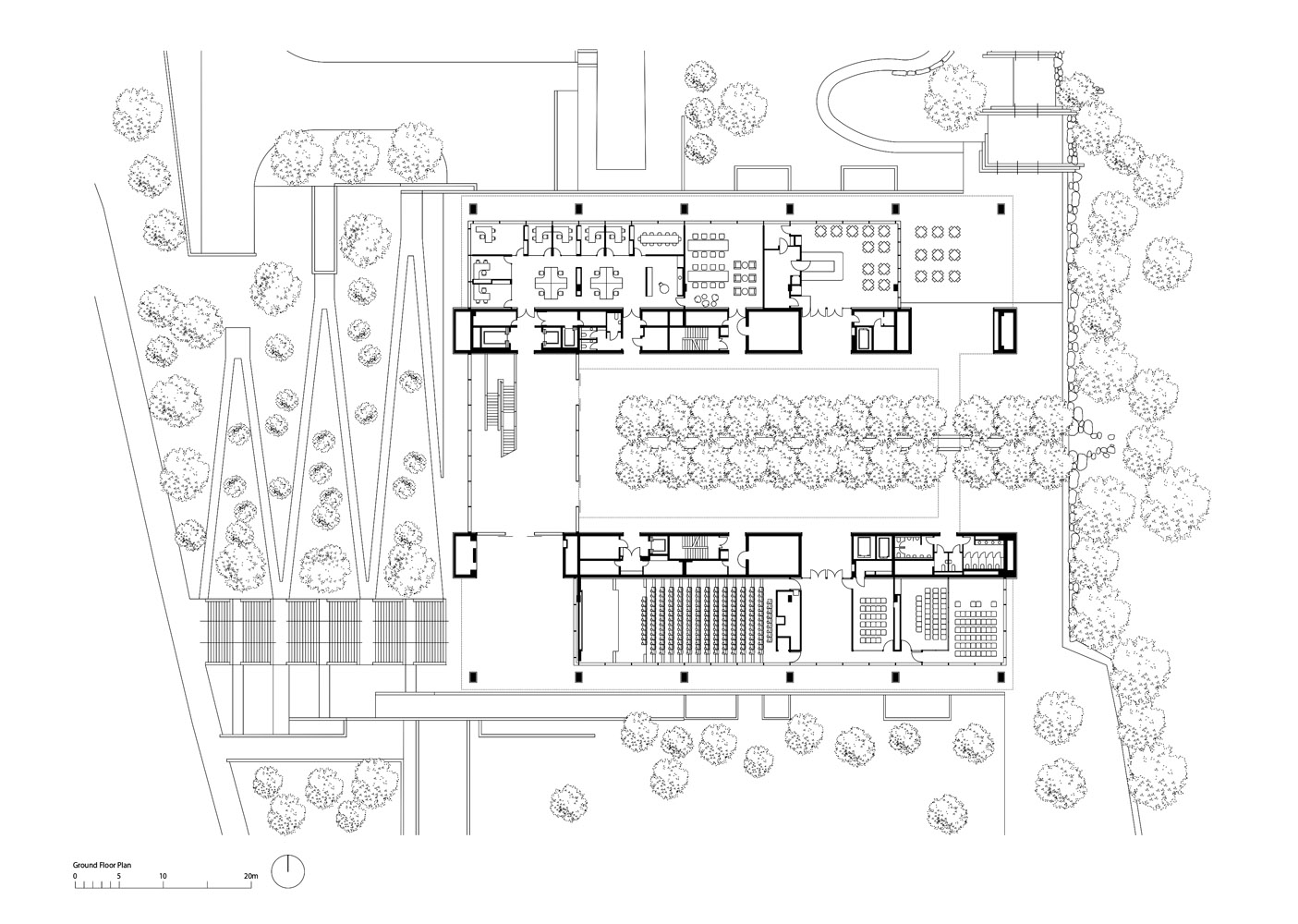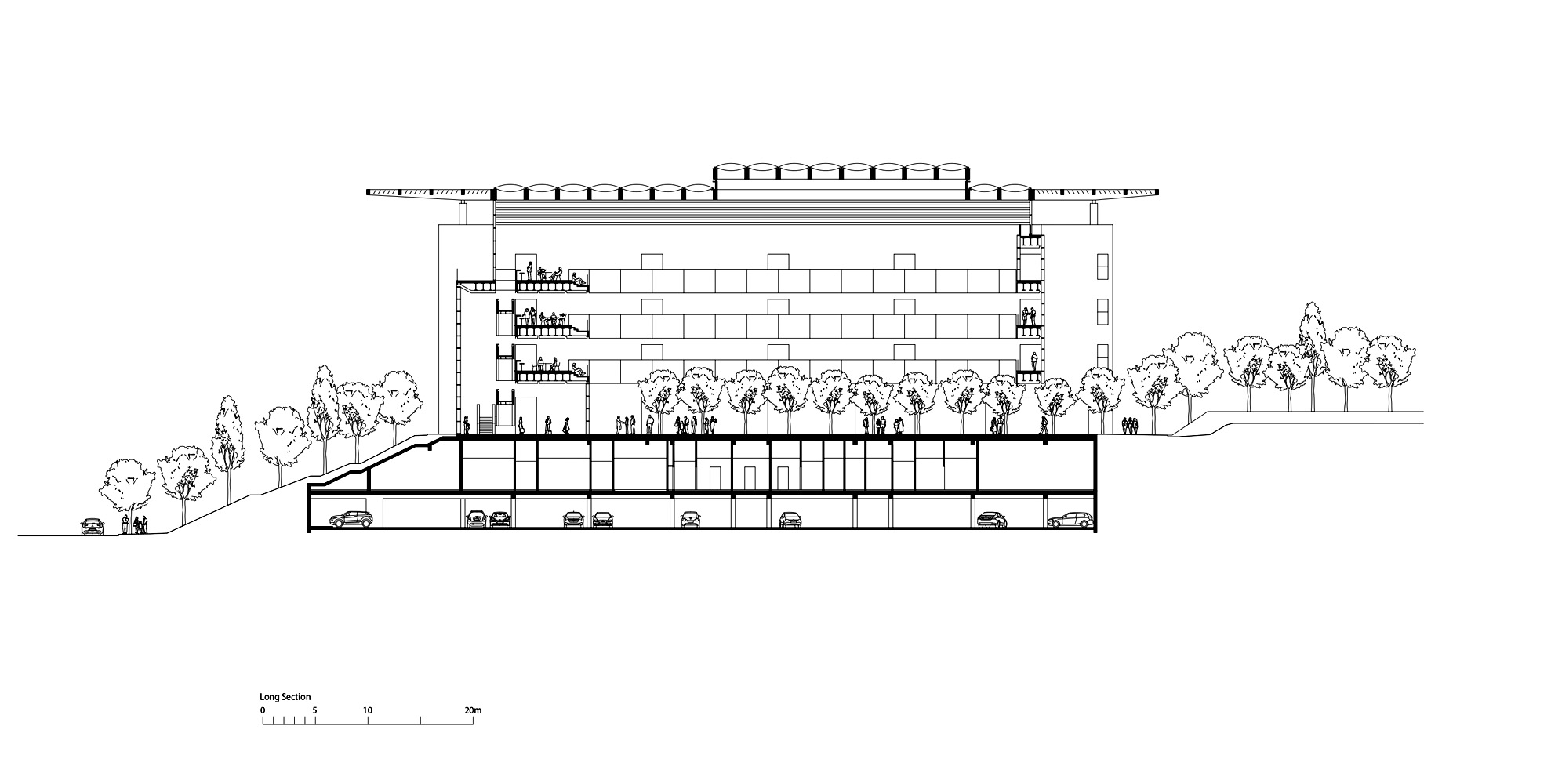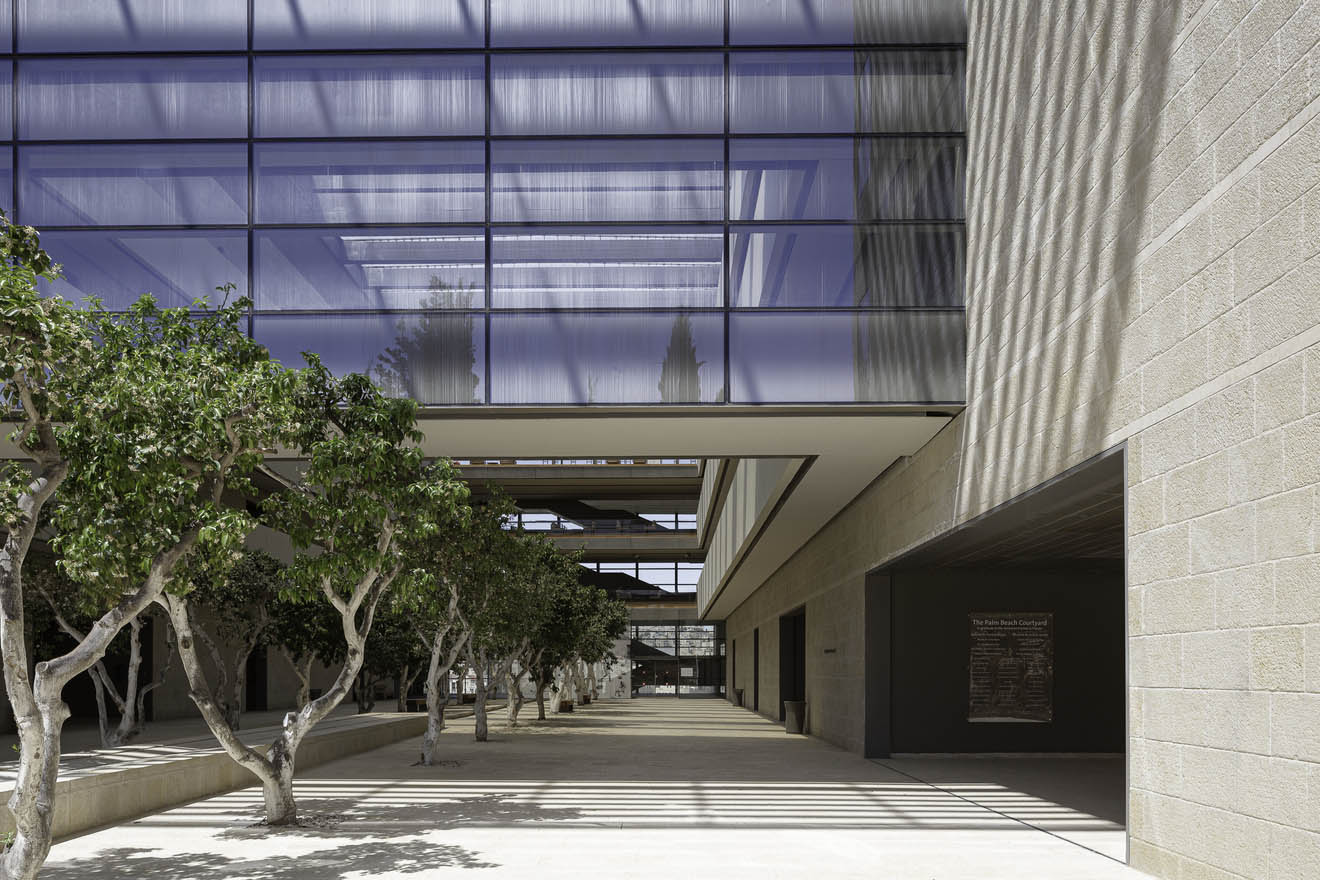The Edmond and Lily Safra Center for Brain Sciences at The Hebrew University of Jerusalem is a pioneering research facility for the scientific exploration of the brain.
Physically, the building acts as a gateway between the university campus and city – its dynamic social spaces and laboratory facilities are designed to attract exceptional scientists, as well as to foster an interest in the centre’s research activities within the wider community.

Exterior view of The Edmond and Lily Safra Center for Brain Sciences. The upper three levels are shaded by a cast aluminium screen, with a non-repetitive representation of the early twentieth century drawings by Spanish neuroscientist, Santiago Ramon y Cajal, illustrating the neurological brain structure. Photo: ©Harel Gilboa.
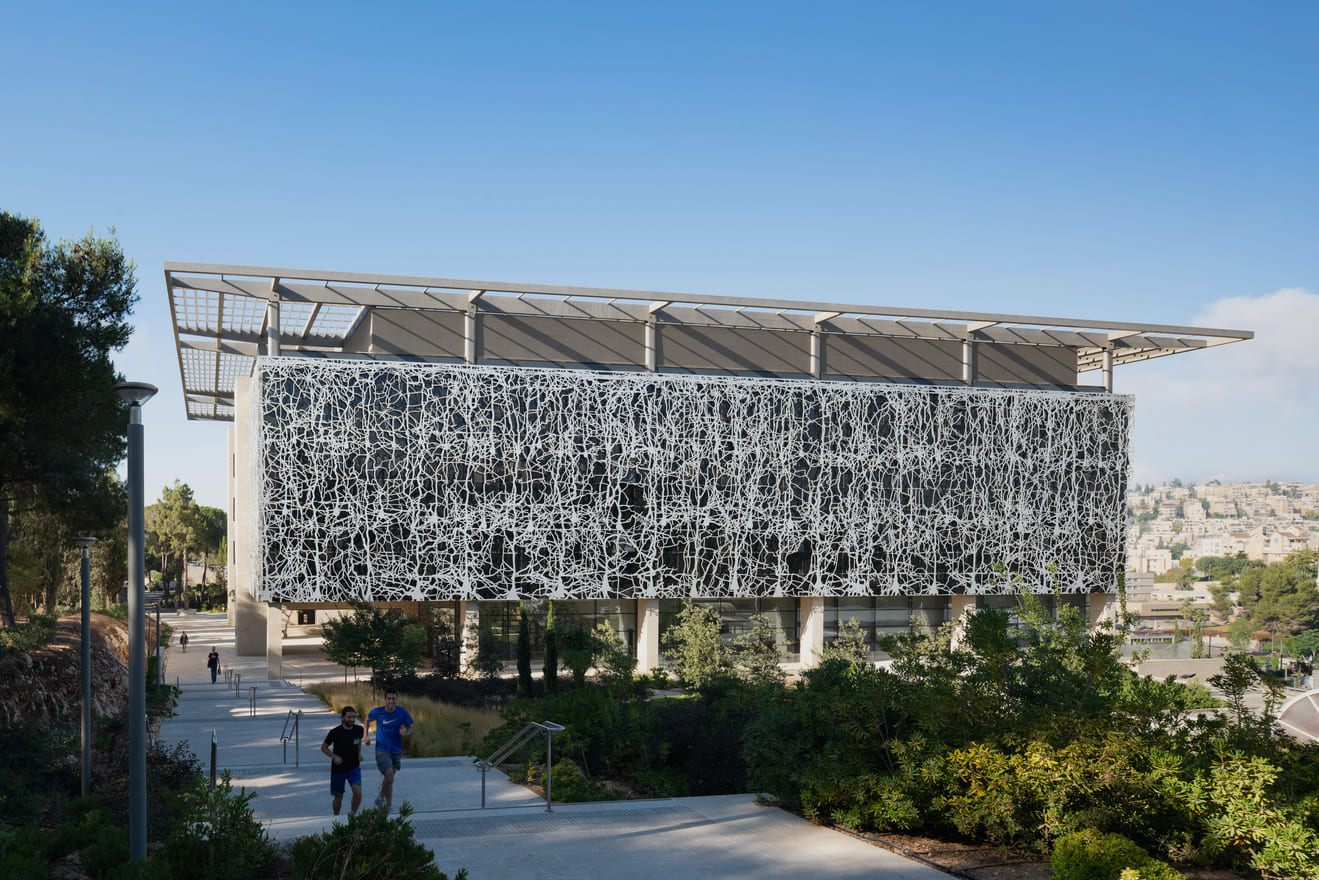
The building is arranged as two parallel wings around a central courtyard. The upper levels house twenty-eight highly flexible laboratories linked by social hubs, which are conceived to encourage interaction and the exchange of ideas between students and staff.

Exterior view of The Edmond and Lily Safra Center for Brain Sciences. The building has been carefully sited amid its natural rugged setting. Photo: ©Harel Gilboa.



The courtyard at the heart of the scheme unites these different functions, establishes new circulation routes through the campus and draws the greenery of the surrounding landscape into the building.

View of interior courtyard with the indoor trees. The building is arranged as two parallel wings around this central courtyard. Photo: ©Harel Gilboa.

The centre’s progressive environmental strategy makes use of passive techniques to naturally reduce energy use. Local materials, such as Jerusalem stone, are utilised where possible, and the building is orientated east-west to reduce solar gain.

The dynamic social spaces are designed to attract exceptional scientists, as well as to foster an interest in the centre’s research activities within the wider community. Photo: ©Harel Gilboa.

The upper three levels are shaded by a perforated metal screen, with a pattern derived from the neurological brain structure. Further passive cooling of the building is provided by translucent ETFE canopies to the west and east, which form distinctive markers for the main entrances.

View of classroom with the verdant landscape in the background. Photo: ©Harel Gilboa.
